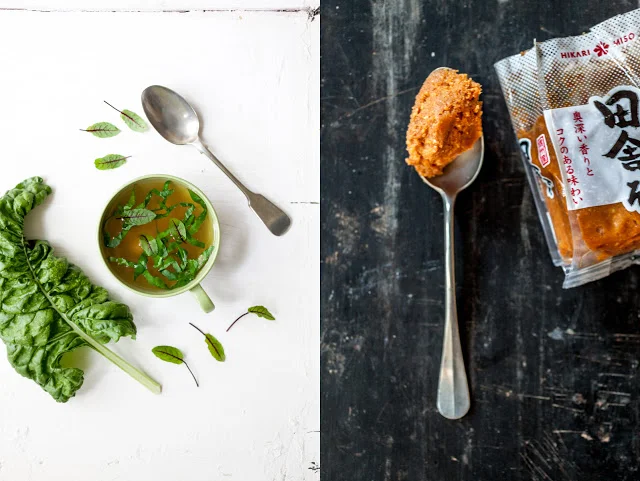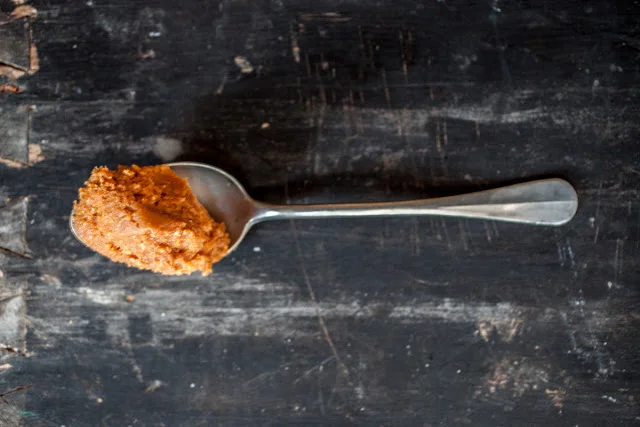Miso soup is the ultimate comfort food. It is gentle, soothing and has a delicious savoury flavour. It is the ideal thing to eat if you feel like a nutritious, simple meal.
My inspiration was Yuka Minami, a lovely Japanese fellow photographer who I met recently in Bulgaria. We both found ourselves working with Tim Clinch on one of his fabulous workshops which he runs from his home town of Veliko Tarnovo in Bulgaria and Finca Buenvino, Andalusia, Southern Spain.
I am writing about the workshop in my next post.
Yuka was still getting to grips with photography, but she was learning fast and we got on well.
While we were in Bulgaria I asked her what she wanted to do when she returned to the UK. "I would love to go to North Wales" she said. She explained she wanted to see mountains and experience some real fresh air.
After a couple of days in Bulgaria I suggested she might like to come to Yorkshire. We don't quite have the high mountains of North Wales but our countryside is wonderful too. Rugged, dramatic and fairly wild.
The upshot of this story is that Yuka came to stay and the only condition was that she taught me how to make an authentic miso soup.
Yuka dispelled my romantic notions about Japan. She lives in Tokyo where people are pretty westernised. But the one thing they do hang on to is eating miso soup.
This is my first attempt at making miso soup and I found it easier and more delicious than I thought I would.
The stock used in Miso soup is called 'dashi' which does not use onion or garlic yet tastes delicious.
Dashi is made by soaking the dried, strap leafed seaweed, kombu (known in the UK as kelp). After the kombu has been soaked it is removed from the water and leaves a slightly salty, clear liquid behind. Dried and smoked bonito flakes (katsuobushi) are then added to the stock to add more flavour. Finally miso paste is stirred into the liquid to complete the stock. Bonito is another name for skipjack tuna.
Some people like to add just a few drops of mirin which is a sweet Japanese rice wine. This does taste nice as it rounds off the flavours but it is not essential.
This forms the basis of the soup and then other ingredients are added such as steamed spinach and tofu.
Miso paste is made from fermented soya beans and is low in fermentable carbohydrates. The carbohydrates in the the soya are drastically reduced by fermentation. Different regions of Japan prefer different types of miso paste. In Kyoto they prefer the white slightly sweeter version of miso. Other regions prefer the dark version. I have used the medium version which neither too sweet nor too strong. All three types of miso paste can be obtained from the Japan Centre and are not too expensive. Once opened miso needs to be kept in the fridge.
You can buy miso soup ingredients online at Japan Centre, or online from many places. Some health food shops stock good miso paste and dried seaweed. I actually went to the Japan Centre which is just by Piccadilly Circus in London. It was a fascinating and rather beautiful shop.
Serves 4
Ingredients
To make the dashi
1 litre hot water
2 large sheets of kombu
2 tbsp katsuobushi
To finish the miso soup
1 tbsp medium coloured miso paste
1 tsp mirin (optional)
75g firm tofu (silken is Ok if that is all you can get), cut into small cubes 0.5 - 1 cm along one side.
10g steamed spinach
1 tbsp chopped chives
Method
Begin by preparing the dashi
Place the kombu in a large pan or wok and pour over hot, but not boiling, water. Leave to soak of at least an hour. Remove the kombu and add the dried bonito flakes (katsuobushi) and bring the liquid to the boil and then turn off the heat. Leave the bonito flakes to soak for 2 or 3 minutes. Staring the liquid.
Add the miso to the dashi stock by half submerging a tea strainer or small, fine mesh sieve in the stock. This is to filter out the larger particles in the miso paste. The idea is to have a smooth soup with little clouds of miso paste floating around the bowl. It should not be lumpy.
Miso paste which is sieved into the dashi to complete the miso stock
Add the steamed spinach and toful cubes and serve scattered with chopped chives or other green leaves. I use blood veined sorrel.
In Japan miso soup is eaten with nearly every meal it is very much part of their staple diet. You could eat a bowl of rice with it to make it more substantial.




